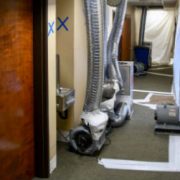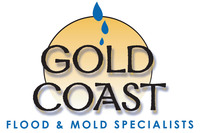Causes of Water Damage San Diego CA
Water damage is a common issue faced by homeowners in San Diego. From heavy rains to plumbing mishaps, various factors can contribute to water damage in homes. Understanding the leading causes of water damage and taking preventive measures can save you from costly repairs and protect your property. Here are the ten most common causes of water damage in San Diego homes with practical tips on how to prevent them.

10 Common Causes of Water Damage
- Plumbing Leaks: Plumbing leaks are one of the leading causes of water damage in San Diego homes. Leaky pipes, faucets, and toilets can result in slow drips or sudden bursts, leading to extensive damage. Regularly inspect your plumbing system, fix leaks promptly, and consider installing a water leak detection system to detect leaks early and prevent significant damage.
- Burst Pipes: Burst pipes can occur due to excessive water pressure or other causes. Insulating pipes in vulnerable areas and keeping your thermostat at a consistent temperature can help prevent pipe bursts. Additionally, scheduling regular professional inspections for your pipes, especially if you notice signs of aging or corrosion, can detect potential issues before they lead to water damage.
- Roof Leaks: Heavy rains and storms can expose weaknesses in your roof, leading to leaks. Inspect your roof for damaged shingles, cracked flashing, or deteriorated seals. Address any issues promptly and consider scheduling regular roof inspections to catch potential problems before they become causes water damage.
- Appliance Malfunctions: Malfunctioning appliances such as washing machines, dishwashers, and refrigerators are causes of water damage if their hoses, pipes, or seals fail. Check these connections and replace any worn-out or damaged parts. Consider using stainless steel braided hoses, which are more durable and less prone to leaks.
- Clogged Gutters and Downspouts: San Diego’s infrequent but heavy rainfalls can overwhelm clogged gutters and downspouts, leading to water overflow. Regularly clean and maintain your gutters, removing leaves, debris, and any obstructions. Ensure that downspouts direct water away from your home’s foundation to prevent water pooling and seepage.
- Foundation Cracks: Cracks in your home’s foundation can allow water to seep in during heavy rains or when the soil becomes saturated. Regularly inspect your foundation for cracks, and if found, seal them with appropriate materials. Maintain proper landscaping to ensure water drains away from the foundation. Water intrusion that can damage your foundation is one of the most expensive causes of water damage.
- Poorly Sealed Windows and Doors: Improperly sealed windows and doors can allow rainwater to penetrate your home, leading to water damage. Inspect the seals and weatherstripping around windows and doors and replace them if necessary. Consider using caulk or sealant to reinforce the water resistance of these areas and prevent them from being causes of water damage to your home.
- HVAC System Issues: Faulty HVAC systems can cause condensation and water leaks. Regularly inspect and maintain your HVAC system, including cleaning or replacing filters, checking drainage lines, and ensuring proper insulation around air ducts. Promptly address any signs of water accumulation or leaks.
- Sewer Backup: Sewer backups are causes of water damage that can be significant and pose health hazards. Install a backflow prevention valve to prevent sewer water from entering your home. Avoid flushing inappropriate items down the drain and have your sewer lines inspected by professionals to identify and address potential issues.
- Natural Disasters: One of the more widespread causes of water damage is mudslides. San Diego is prone to natural disasters such as floods and wildfires that can cause them. Stay informed about weather alerts and evacuation

Frequently Asked Questions About Water Damage
How quickly should I address water damage in my home?
It’s crucial to address water damage as soon as possible to minimize further damage and prevent mold growth. Acting within the first 24 to 48 hours is ideal. Delaying restoration can lead to structural issues, health risks, and increased repair costs.
Will my homeowner’s insurance cover all causes of water damage?
The coverage for water damage varies depending on your insurance policy. Most standard homeowner’s insurance policies cover sudden and accidental water damage, such as burst pipes or appliance leaks. However, causes of water damage by floods or gradual leaks may require separate flood insurance or additional coverage.
Can I handle water damage cleanup and restoration myself?
While minor water damage may be manageable with DIY efforts, it’s generally recommended to hire a professional water damage restoration company. Professionals have the expertise, specialized equipment, and knowledge to properly assess, mitigate, and restore the damage. They can also identify hidden issues that may not be immediately apparent and determine the causes of water damage.
How can I tell if I have hidden water damage in my home?
Hidden water damage can be challenging to detect, but there are some signs to watch out for:
- Musty or moldy odors: If you notice persistent musty smells, especially in areas prone to moisture like basements or bathrooms, it could indicate hidden water damage.
- Discoloration or staining: Look for unusual stains or discoloration on walls, ceilings, or floors, as they may be caused by water seepage or leaks behind the surfaces.
- Peeling or bubbling paint or wallpaper: Moisture can cause paint or wallpaper to peel, bubble, or warp. This can be a sign of hidden water damage underneath.
- Warped or buckling flooring: Water damage can cause hardwood floors to warp or buckle, and carpets may feel damp or have visible mold growth.
- Increased humidity or condensation: Excessive humidity or condensation on windows, walls, or mirrors, even with proper ventilation, may indicate an underlying moisture issue.
How much water does it take to cause water damage?
The amount of water required to cause water damage varies depending on factors such as the size of the affected area, the duration of exposure, and the materials involved. Even a small amount of water, if left unattended, can lead to significant damage over time. It’s important to address any water intrusion promptly to prevent further issues such as mold growth and structural damage.
What About Mold After Water Damage?
Mold growth is a common concern after water damage. Mold can begin to grow within 24 to 48 hours in areas with excessive moisture or water damage. It thrives in damp and humid conditions, making it a potential issue following water intrusion. If not properly addressed, mold can cause structural damage and pose health risks. It’s crucial to address water damage promptly, thoroughly dry the affected areas, and consider professional mold remediation if mold growth is present. Preventing or promptly mitigating water damage is key to minimizing the risk of mold growth.
Call Gold Coast Flood Restorations if You Have Water Damage or Mold Problems
If you suspect hidden water damage, it’s advisable to consult a professional water damage restoration specialist like Gold Coast Flood Restorations who can use specialized equipment like moisture meters and thermal imaging to assess your property accurately. Gold Coast Flood Restorations has over 35 years experience of serving San Diego and can identify and address the causes of water damage to prevent further complications. Call us at (619) 449-9611










Also find us on…